
Penmanship is the technique of writing with the hand using a writing instrument. Today, this is most commonly done with a pen, or pencil, but throughout history has included many different implements. The various generic and formal historical styles of writing are called "hands" while an individual's style of penmanship is referred to as "handwriting".

Graphology is the analysis of handwriting with attempt to determine someone's personality traits. No scientific evidence exists to support graphology, and it is generally considered a pseudoscience or scientifically questionable practice. However, it remains in widespread use in France and has historically been considered legitimate for use in some court cases. The term is sometimes incorrectly used to refer to forensic document examination, due to the fact that aspects of the latter dealing with the examination of handwritten documents are occasionally referred to as graphanalysis.
The double acute accent is a diacritic mark of the Latin and Cyrillic scripts. It is used primarily in Hungarian, and consequently it is sometimes referred to by typographers as hungarumlaut. The signs formed with a regular umlaut are letters in their own right in the Hungarian alphabet—for instance, they are separate letters for the purpose of collation. Letters with the double acute, however, are considered variants of their equivalents with the umlaut, being thought of as having both an umlaut and an acute accent.

Handwriting is the writing done with a writing instrument, such as a pen or pencil, in the hand. Handwriting includes both printing and cursive styles and is separate from formal calligraphy or typeface. Because each person's handwriting is unique and different, it can be used to verify a document's writer. The deterioration of a person's handwriting is also a symptom or result of several different diseases. The inability to produce clear and coherent handwriting is also known as dysgraphia.
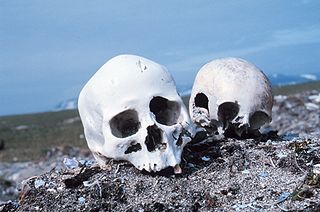
In forensic science, questioned document examination (QDE) is the examination of documents potentially disputed in a court of law. Its primary purpose is to provide evidence about a suspicious or questionable document using scientific processes and methods. Evidence might include alterations, the chain of possession, damage to the document, forgery, origin, authenticity, or other questions that come up when a document is challenged in court.

Sütterlinschrift is the last widely used form of Kurrent, the historical form of German handwriting that evolved alongside German blackletter typefaces. Graphic artist Ludwig Sütterlin was commissioned by the Prussian Ministry of Science, Art and Culture to create a modern handwriting script in 1911. His handwriting scheme gradually replaced the older cursive scripts that had developed in the 16th century at the same time that letters in books had developed into Fraktur. The name Sütterlin is nowadays often used to refer to all varieties of old German handwriting, although only this specific script was taught in all German schools from 1915 to 1941.

Cursive is any style of penmanship in which characters are written joined in a flowing manner, generally for the purpose of making writing faster, in contrast to block letters. It varies in functionality and modern-day usage across languages and regions; being used both publicly in artistic and formal documents as well as in private communication. Formal cursive is generally joined, but casual cursive is a combination of joins and pen lifts. The writing style can be further divided as "looped", "italic" or "connected".

Antiqua is a style of typeface used to mimic styles of handwriting or calligraphy common during the 15th and 16th centuries. Letters are designed to flow and strokes connect together in a continuous fashion; in this way it is often contrasted with Fraktur-style typefaces where the individual strokes are broken apart. The two typefaces were used alongside each other in the germanophone world, with the Antiqua–Fraktur dispute often dividing along ideological or political lines. After the mid-20th century, Fraktur fell out of favor and Antiqua-based typefaces became the official standard.
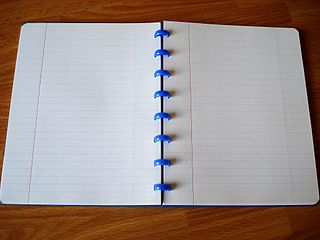
Ruled paper is writing paper printed with lines as a guide for handwriting. The lines often are printed with fine width and in light colour and such paper is sometimes called feint-ruled paper. Additional vertical lines may provide margins or act as tab stops or create a grid for plotting data; for example, graph paper is divided into squares by horizontal and vertical lines.
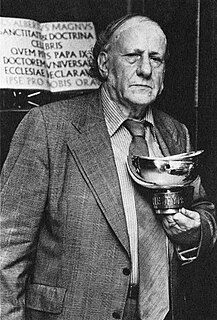
Berthold Ludwig Wolpe was a German calligrapher, typographer, type designer, book designer and illustrator. He was born into a Jewish family at Offenbach near Frankfurt, emigrated to England soon after the Nazis came to power in 1935 and became a naturalized British citizen in 1947. He was made a Royal Designer for Industry in 1959, awarded an honorary doctorate by the Royal College of Art in 1968 and appointed an Officer of the Order of the British Empire (OBE) in 1983. He died in London in 1989.

Sir Edward Maunde Thompson was a British palaeographer and Principal Librarian and first Director of the British Museum. He is also noted for his study of William Shakespeare's handwriting in the manuscript of the play Sir Thomas More.

Radical 11 or radical enter (入部) meaning "enter", "come in (to)", "join" is one of 23 of the 214 Kangxi radicals that are composed of 2 strokes.
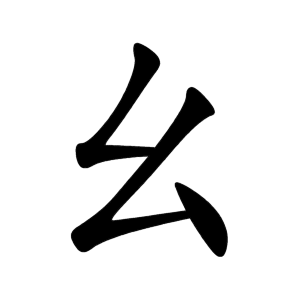
Radical 52 or radical short thread (幺部) meaning "short" or "tiny" is one of the 31 Kangxi radicals composed of three strokes.

Radical 87 or radical claw (爪部) meaning "claw", "nail" or "talon" is one of the 34 Kangxi radicals composed of 4 strokes.

Radical 95 or radical profound (玄部) meaning "dark" or "profound" is one of the 23 Kangxi radicals composed of 5 strokes.

Radical 120 or radical silk (糸部) meaning "silk" is one of the 29 Kangxi radicals composed of 6 strokes.

William Shakespeare's handwriting is known from six surviving signatures, all of which appear on legal documents. It is believed by many scholars that the three pages of the handwritten manuscript of the play Sir Thomas More are also in William Shakespeare's handwriting. This is based on many studies by a number of scholars that considered handwriting, spelling, vocabulary, literary aspects, and more.
Mandaic is a Unicode block containing characters of the Mandaic script used for writing the historic Eastern Aramaic, also called Classical Mandaic, and the modern Neo-Mandaic language.
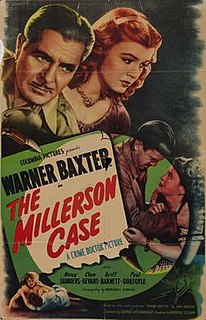
The Millerson Case is a 1947 drama directed by George Archainbaud, starring Warner Baxter, Nancy Saunders and Clem Bevans. In the 8th film of Columbia's Crime Doctor series, Dr. Robert Ordway is vacationing in the Blue Ridge Mountains district of West Virginia when a Typhoid fever epidemic breaks out. Three deaths occur, with the first two being typhoid-caused. The death of the third person is from poisoning.
















